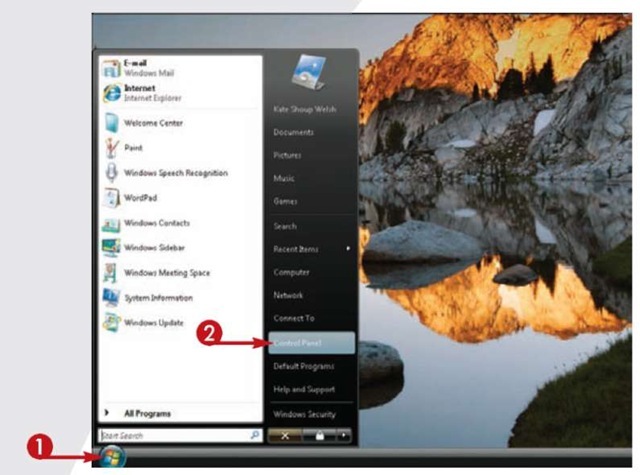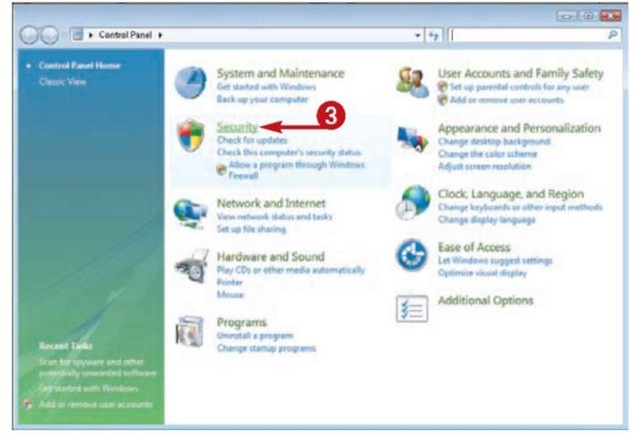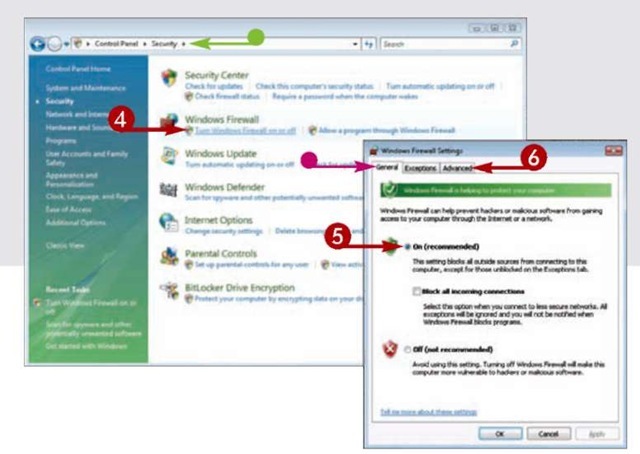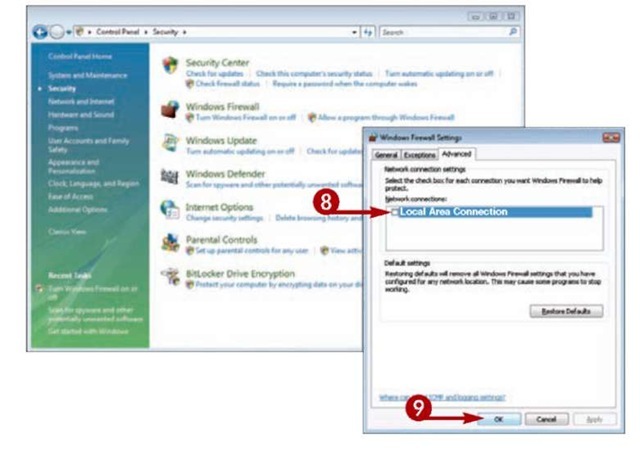When you enable and configure the Windows Firewall, you set up a layer of protection to shield your computer or network from intrusion that can put your system at risk. As its name implies, a firewall creates a barrier between your system and a network such as the Internet. You should not use more than one firewall on your system at any given time.
System intrusion can take many forms. One example is an Internet worm, which is a type of computer virus that can, among other things, leave behind files that create an opening for others who want to access your computer or steal your passwords. A worm can also send out copies of itself to the people who are listed in your Address Book. Other intruders, such as hackers, may also try to access your files or confidential information.


1 Click Start.
2 Click Control Panel.

The Control Panel window opens.
3 Click Security.

• The Security window opens.
4 Under Windows Firewall, click Turn Windows Firewall On or Off.
Note: If prompted, type the administrator password or click Continue.
• The Windows Firewall Settings dialog box opens to the General tab.
5 Click the On option.
6 Click the Advanced tab.

7 Review the listing(s) under Network Connections.
By default, all the entries in the Network Connections list are selected.
8 Click to deselect any network connection for which you do not want to enable the firewall.
9 Click OK.
Your firewall is now configured and enabled.
Tips
Important!
Just because you use the Windows Firewall does not mean that you do not need other forms of protection, including common-sense measures that limit your risk of exposure to threats. You should continue to run antivirus software and be careful when opening e-mail attachments or other files from any source, even a trusted one. Also, if you download free software, such as file-sharing programs or screen savers, read the license agreement carefully to ensure that you do not receive pop-up ads from and that the program does not transmit data about your computing habits to the company who developed the software or to any other third parties.
Remove It!
If, after customizing your Windows Firewall configuration, you want it to operate as it originally did, you can restore the default settings by clicking Restore Defaults in the Advanced tab of the Windows Firewall Settings dialog box.
